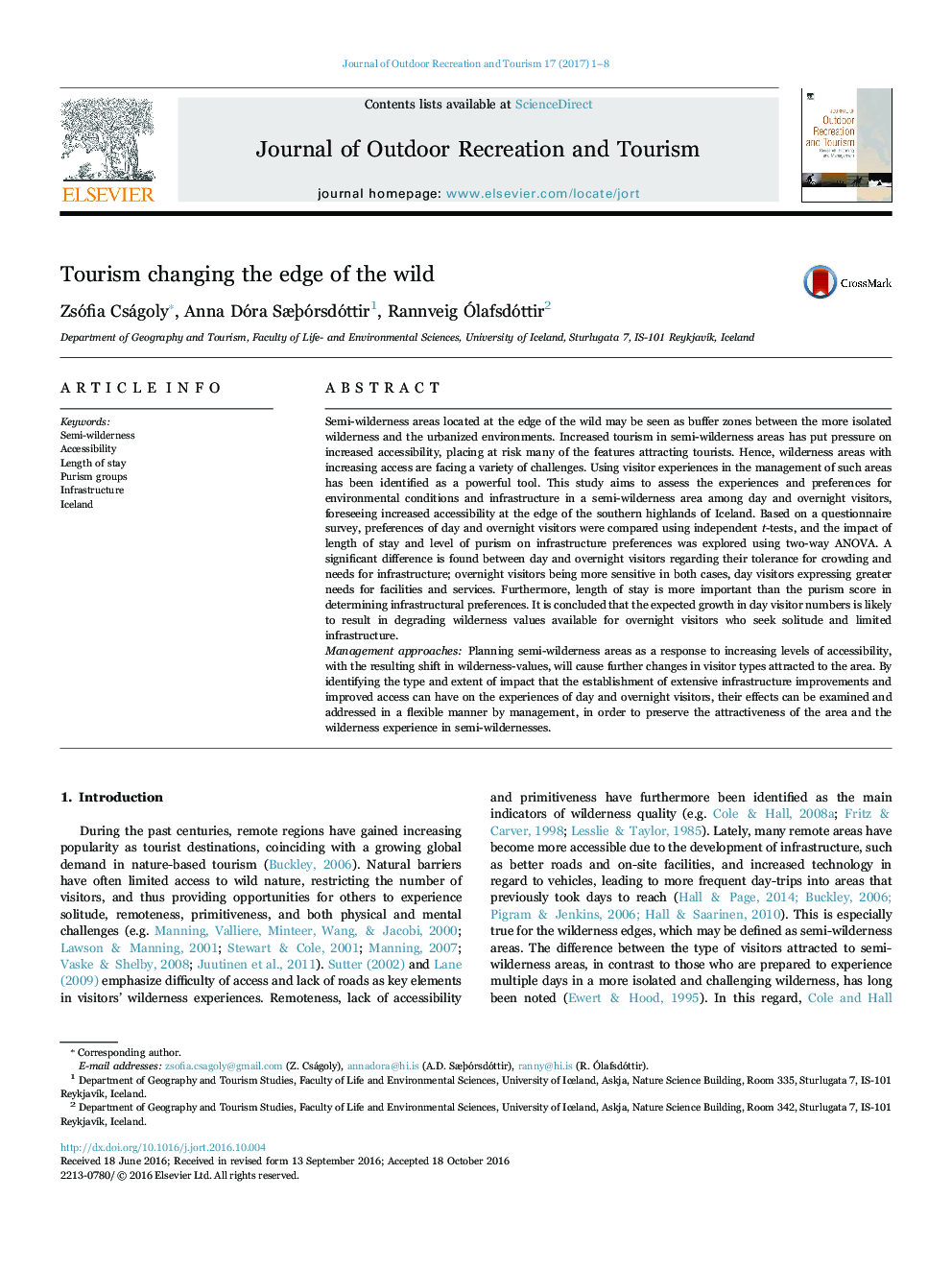| کد مقاله | کد نشریه | سال انتشار | مقاله انگلیسی | نسخه تمام متن |
|---|---|---|---|---|
| 4759876 | 1421754 | 2017 | 8 صفحه PDF | دانلود رایگان |
- Solar cell performance related to Cu2O/Zn(O,S) interface composition.
- ZnSO4 is identified as a current blocking layer in Cu2O/Zn(O,S) heterojunctions.
- Amount of interfacial ZnSO4 decreases with increasing substrate temperature.
- Optimal device performance achieved at 100 °C.
Semi-wilderness areas located at the edge of the wild may be seen as buffer zones between the more isolated wilderness and the urbanized environments. Increased tourism in semi-wilderness areas has put pressure on increased accessibility, placing at risk many of the features attracting tourists. Hence, wilderness areas with increasing access are facing a variety of challenges. Using visitor experiences in the management of such areas has been identified as a powerful tool. This study aims to assess the experiences and preferences for environmental conditions and infrastructure in a semi-wilderness area among day and overnight visitors, foreseeing increased accessibility at the edge of the southern highlands of Iceland. Based on a questionnaire survey, preferences of day and overnight visitors were compared using independent t-tests, and the impact of length of stay and level of purism on infrastructure preferences was explored using two-way ANOVA. A significant difference is found between day and overnight visitors regarding their tolerance for crowding and needs for infrastructure; overnight visitors being more sensitive in both cases, day visitors expressing greater needs for facilities and services. Furthermore, length of stay is more important than the purism score in determining infrastructural preferences. It is concluded that the expected growth in day visitor numbers is likely to result in degrading wilderness values available for overnight visitors who seek solitude and limited infrastructure.Management approachesPlanning semi-wilderness areas as a response to increasing levels of accessibility, with the resulting shift in wilderness-values, will cause further changes in visitor types attracted to the area. By identifying the type and extent of impact that the establishment of extensive infrastructure improvements and improved access can have on the experiences of day and overnight visitors, their effects can be examined and addressed in a flexible manner by management, in order to preserve the attractiveness of the area and the wilderness experience in semi-wildernesses.
Journal: Journal of Outdoor Recreation and Tourism - Volume 17, March 2017, Pages 1-8
